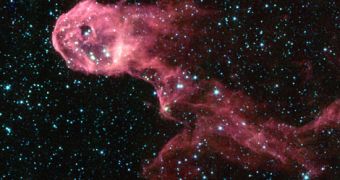When thinking of the vastness of space, on how little we know and have seen of it and on how much there is still left to discover and prove, choosing the next missions that will be set in motion in a decade or so seems to be the most difficult thing to do. So, what will it be - dark matter, Earth-like planets, universe formation and evolution, black holes or other, new mysterious objects and phenomena? This is what preoccupies NASA's experts who have embarked on a mission to set priorities.
So far, they have managed to narrow all the potential projects down to 19. They are already funded by the agency, but after subjecting the most important of them to the attention of the National Academy of Sciences, they will receive a special treatment. Every decade, the top priority scientific initiatives of the US are assessed and we're now at that point. About every science aspect is comprised in the proposed ideas, as Jon Morse, the head of NASA's astrophysics division in Washington, D.C., states.
"There are concepts out there across the electromagnetic spectrum," shares Morse, quoted by Discovery. "There are follow-ups to Hubble, looking for extrasolar planets (...) [al]most every possible idea is represented." A thorough evaluation of each of them has to be on NASA officials' desks by early 2009.
For example, Webster Cash and a team from the University of Colorado in Boulder are involved in developing a telescope that would allow taking pictures of planets similar to ours without being hindered by the light of their own suns, which it will block. "The breakthrough was the shape" of the starshade, he explained. "It allows you to suppress diffraction (of light) and creates a distinct edge that makes a very, very dark shadow" so that you can “see the pale blue light”.
Other targets address the issue of the intergalactic spreading of dust and gas in a $600 million - $2 billion mission or the $4.5 billion James Webb Space Telescope, an infrared version of Hubble (planned long before that, but it still didn't meet its budget requirements). "It'll be hard to pick, but at the end of the day, if you want to move an area of science forward, you have to get the advocates and the emotional energy to make it happen," believes Ken Sembach from the Space Telescope Science Institute in Baltimore, the scientist involved in the gas and dust research.

 14 DAY TRIAL //
14 DAY TRIAL //